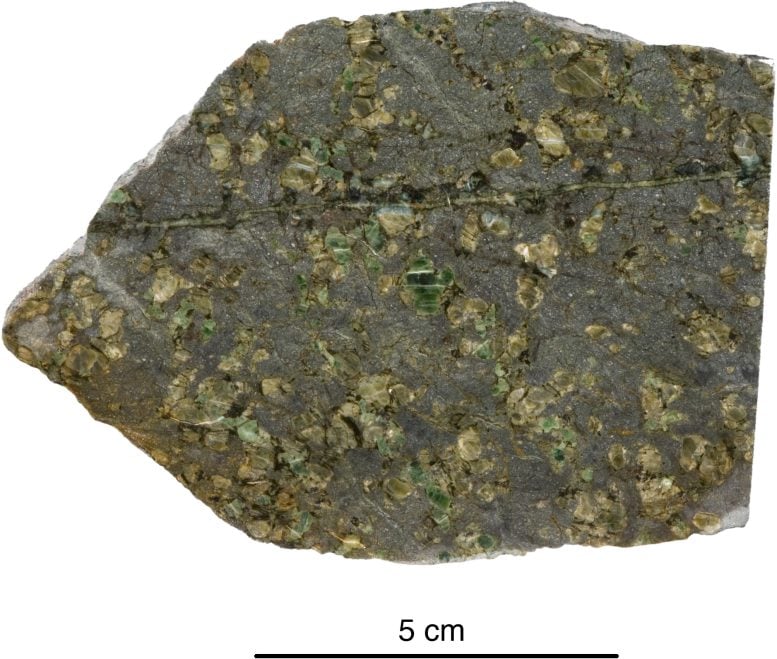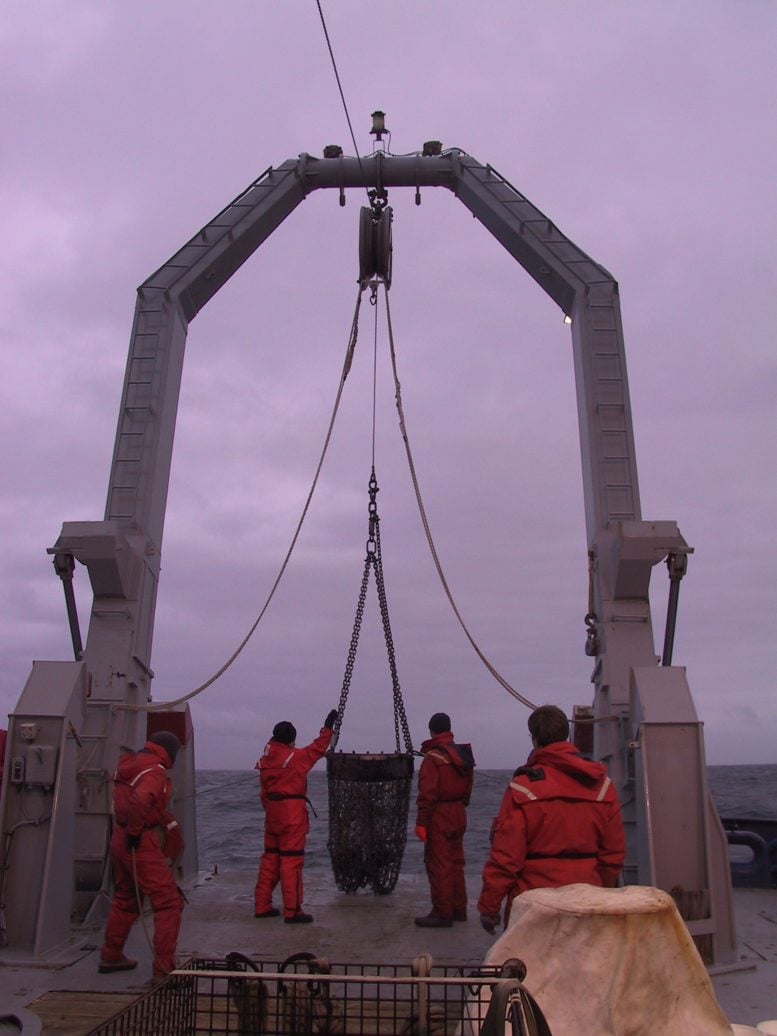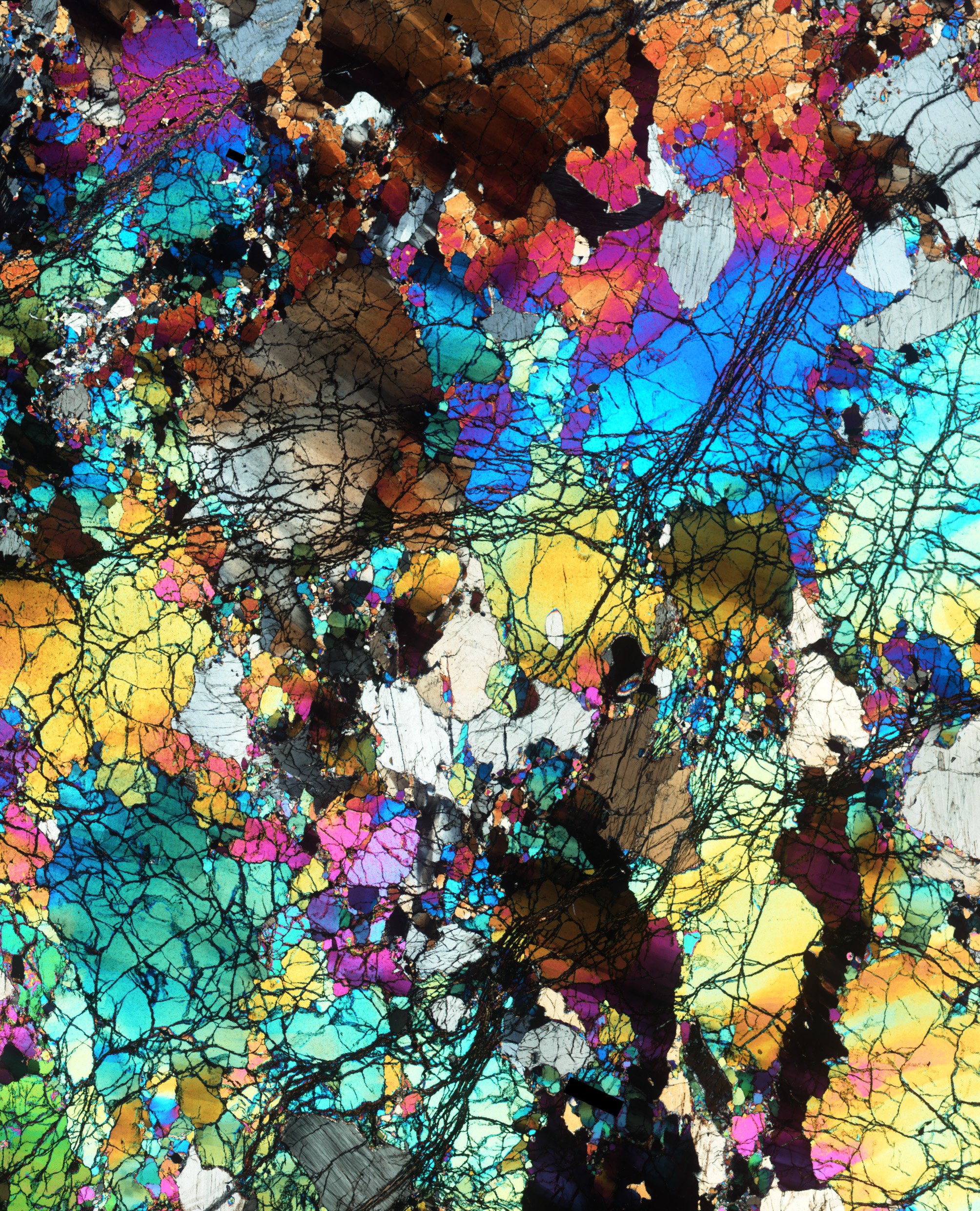A thin slice of the ancient rocks collected from Gakkel Ridge near the North Pole, photographed under a microscope and seen under cross-polarized light. Field width ~ 14mm. Analyzing rocks in thin section helps geologists identify and characterize minerals within a rock. The analyses reveal information about the rock’s mineral composition, texture and history, such as how it formed and any subsequent changes it has undergone. Researchers use the identification and chemical composition of the minerals in these ancient rocks from Earth’s mantle to determine the conditions under which these rocks melted. Credit: E. Cottrell, Smithsonian
Smithsonian scientists conduct new research on ancient ‘time capsule’ rocks, dating back at least 2.5 billion years.
Researchers at the Smithsonian’s National Museum of Natural History have conducted a new analysis of rocks believed to be at least 2.5 billion years old, shedding light on the chemical history of Earth’s mantle, the layer beneath the planet’s crust. Their findings enhance our understanding of Earth’s earliest geologic processes and contribute to a long-standing scientific debate regarding the planet’s geologic history. Notably, the study provides evidence that the oxidation state of most of Earth’s mantle has remained stable over geological time, challenging previous assertions by other researchers about major transitions.
“This study tells us more about how this special place in which we live came to be the way it is, with its unique surface and interior that have allowed life and liquid water to exist,” said Elizabeth Cottrell, chair of the museum’s department of mineral sciences, curator of the National Rock Collection and co-author of the study. “It’s part of our story as humans because our origins all trace back to how Earth formed and how it has evolved.”
The study, published in the journal Nature, centered on a group of rocks collected from the seafloor that possessed unusual geochemical properties. Namely, the rocks show evidence of having melted to an extreme degree with very low levels of oxidation; oxidation is when an 
An ancient rock dredged from the seafloor and studied by the research team. Credit: Tom Kleindinst
“The ancient rocks we studied are 10,000 times less oxidized than typical modern mantle rocks, and we present evidence that this is because they melted deep in the Earth during the Archean, when the mantle was much hotter than it is today,” Cottrell said. “Other researchers have tried to explain the higher oxidation levels seen in rocks from today’s mantle by suggesting that an oxidation event or change has taken place between the Archean and today. Our evidence suggests that the difference in oxidation levels can simply be explained by the fact that Earth’s mantle has cooled over billions of years and is no longer hot enough to produce rocks with such low oxidation levels.”
Geological Evidence and Study Methodology
The research team—including lead study author Suzanne Birner who completed a pre-doctoral fellowship at the National Museum of Natural History and is now an assistant professor at Berea College in Kentucky—began their investigation to understand the relationship between Earth’s solid mantle and modern seafloor volcanic rocks. The researchers started by studying a group of rocks that were dredged from the seafloor at two oceanic ridges where tectonic plates are spreading apart and the mantle is churning up to the surface and producing new crust.
The two places the studied rocks were collected from, the Gakkel Ridge near the North Pole and the Southwest Indian Ridge between Africa and Antarctica, are two of the slowest-spreading tectonic plate boundaries in the world. The slow pace of the spreading at these ocean ridges means that they are relatively quiet, volcanically speaking, compared to faster-spreading ridges that are peppered with volcanoes such as the East Pacific Rise. This means that rocks collected from these slow-spreading ridges are more likely to be samples of the mantle itself.

The stern of the research vessel, the R/V Knorr while at sea in 2004. The A-frame structure holds the giant metal and chain bucket which is lowered more than 10,000 feet below the ocean surface and dragged along the seafloor to collect geologic samples. Credit: Emily Van Ark
When the team analyzed the mantle rocks they collected from these two ridges, they discovered they had strange chemical properties in common. First, the rocks had been melted to a much greater extent than is typical of Earth’s mantle today. Second, the rocks were much less oxidized than most other samples of Earth’s mantle.
To achieve such a high degree of melting, the researchers reasoned that the rocks must have melted deep in the Earth at very high temperatures. The only period of Earth’s geologic history known to include such high temperatures was between 2.5 and 4 billion years ago during the Archean Eon. Consequently, the researchers inferred that these mantle rocks may have melted during the Archean, when the inside of the planet was 360–540 degrees DOI: 10.1038/s41586-024-07603-w
In addition to Birner and Cottrell, Fred Davis of the University of Minnesota Duluth and Jessica Warren of the University of Delaware were co-authors of the study.
The research was supported by the Smithsonian and the National Science Foundation.





















Discussion about this post